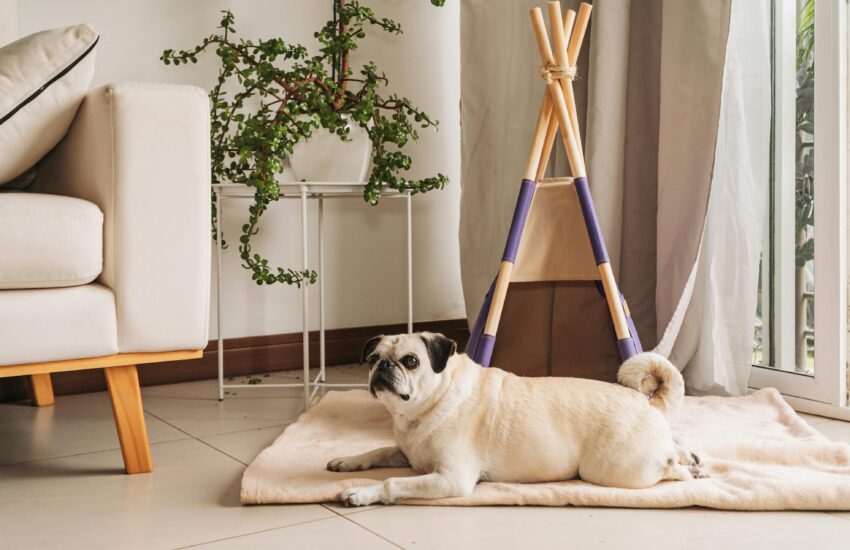Longest Living Hamster Breeds
When it comes to choosing a pet hamster, longevity is often a key factor for many owners. Understanding the different hamster breeds and their potential lifespans can help you make an informed decision that suits your lifestyle. In this article, we will explore the longest living hamster breeds, delve into their care needs, and discuss how to create a healthy environment that promotes a long life. Let’s dive into the world of hamsters!
Factors Influencing Hamster Lifespan
Before we get into the specific breeds, it’s important to understand the various factors that can influence a hamster’s lifespan. Generally, hamsters live between 2 to 3 years, but many factors can affect their longevity, including genetics, diet, environment, and healthcare. Providing your hamster with a balanced diet rich in essential nutrients, a clean and spacious habitat, regular veterinary checkups, and plenty of exercise can significantly enhance their lifespan. Stress management and socialization are also critical; a happy hamster tends to live longer. Additionally, certain breeds may be predisposed to longer lifespans due to healthier genetic backgrounds.
Common Health Issues
Hamsters can face various health challenges that may impact their lifespan. Common health issues include wet tail, respiratory infections, and dental problems. Understanding these conditions can help you take preventive measures. Ensure that your hamster is housed in a clean environment, as unsanitary conditions can lead to infections. **Regular vet check-ups** are also essential for early diagnosis and treatment of any health issues. By keeping an eye on symptoms such as lethargy, unusual behavior, or changes in appetite, you can ensure your hamster remains healthy.
Dietary Needs for Longevity
**Nutrition plays a pivotal role** in promoting the longevity of your hamster. A balanced diet includes high-quality hamster pellets, fresh fruits, vegetables, and occasional protein sources like mealworms. Make sure to avoid sugary or fatty foods, as these can lead to obesity and health complications. Keeping your hamster hydrated is equally important; ensure that fresh water is always available. An appropriate diet tailored to your hamster’s breed can significantly impact its lifespan and overall quality of life.
Top Longest Living Hamster Breeds
Now, let’s explore some of the longest living hamster breeds. Understanding these breeds can help pet owners select the best companions that can potentially stay with them longer.
Syrian Hamster
The **Syrian hamster**, also known as the golden hamster, is one of the most popular pet breeds. They typically live 2 to 3 years, but many owners have reported their Syrian hamsters living up to 4 years with proper care. Syrian hamsters are relatively large and enjoy solitary living. Providing them ample space for exercise and stimulating activities will help ensure they stay active and mentally engaged. A well-cared-for Syrian hamster is known for its friendly disposition, adding to its appeal as a long-living pet. 
Dwarf Campbell’s Hamster
The **Dwarf Campbell’s hamster** is known for its small size and delightful personality. They usually live around 2 to 3 years but can occasionally reach up to 4 years. This breed is social and thrives in pairs or small groups, which makes them unique among hamsters. Moreover, ensuring they have enough space and enrichment can lead to a fulfilling life. With the right care and companionship, these hamsters can be charming additions to the family. 
Roborovski Hamster
**Roborovski hamsters** are one of the smallest breeds and can live approximately 3 to 4 years in a safe and healthy environment. They are known for being fast and energetic, often requiring ample space to roam and explore. Due to their size and activity level, it is recommended to house them in larger cages with climbing structures and wheels. Proper nutrition and a minimal-stress environment are also vital for Roborovski hamsters, contributing to their longevity. 
Creating a Healthy Environment
A hamster’s living environment plays a significant role in its overall health and lifespan. Providing a spacious and **clean habitat** is essential. Regular cleaning of their habitat not only prevents illness but also encourages an active lifestyle. Ensure the enclosure has proper ventilation, bedding for comfort, and plenty of enrichment activities to keep your hamster mentally stimulated. Interactive toys, tunnels, and hiding spots can enhance their living conditions and contribute to a happy and healthy life.
Materials for Hamster Cages
Selecting the right materials for your hamster’s cage is crucial. Wire cages, glass aquariums, or specialized plastic cages are all good options as long as they are adequately sized. Avoid cedar or pine shavings, as the oils can be harmful to hamsters. Instead, opt for paper-based or aspen bedding, which is safer for these small pets. Always aim for a **multi-level cage design** that allows your hamsters to climb, explore, and exercise.
Socialization and Mental Stimulation
Hamsters require **social interaction** and stimulation, particularly the breeds that thrive in pairs. Handling your hamster regularly and providing safe toys can help reduce stress while promoting an active lifestyle. Always approach your hamster gently to build trust. Socialization significantly influences a hamster’s mental well-being, which can lead to a longer life. Engaging in activities, such as teaching your hamster tricks or setting up obstacle courses, can enhance their quality of life.
Conclusion
Understanding the longest living hamster breeds and providing excellent care can significantly enhance a hamster’s lifespan. By recognizing the factors that influence their longevity, such as diet, health, and environment, you can ensure that your furry friend enjoys a long, happy life. Remember, each hamster is an individual, and with love and proper care, you can make a positive impact on their well-being.
Key Takeaways
- Factors like diet, environment, and genetic predisposition impact a hamster’s lifespan.
- Syrian, Dwarf Campbell’s, and Roborovski hamsters are among the longest living breeds.
- Creating a clean, spacious environment with adequate enrichment promotes longevity.
FAQ
1. What is the average lifespan of a hamster?
The average lifespan of a hamster is typically between 2 to 3 years, depending on the breed and care quality. Some hamsters, especially Syrians and Roborovski, can live up to 4 years with excellent care. Good nutrition and a proper living environment are critical factors in their longevity.
2. Do hamsters require a companion to live longer?
Generally, Syrian hamsters prefer to live alone. However, Dwarf Campbell’s and Roborovski hamsters are more social and can thrive in pairs or small groups. Proper socialization can help reduce stress and enhance their quality of life, contributing to a longer lifespan.
3. How can I tell if my hamster is healthy?
Healthy hamsters are active, curious, and eat regularly. Signs of health issues can include lethargy, lack of appetite, and unusual behavior. Regular veterinary check-ups and attentive observation can help ensure your hamster’s health.
4. What should I feed my hamster to maximize its lifespan?
Provide your hamster with a balanced diet that includes high-quality hamster pellets, fresh vegetables, fruits, and occasional protein sources. Avoid sugary and fatty foods, as these can lead to obesity and health problems. A varied diet can enhance their health and longevity.
5. What is the best cage size for my hamster?
A spacious cage with a minimum size of 24″x12″ is recommended for most hamster breeds, with larger sizes preferred for active breeds like Roborovski. Vertical space for climbing and exercise is also essential. Ensure that the cage is safe and free of harmful materials.
